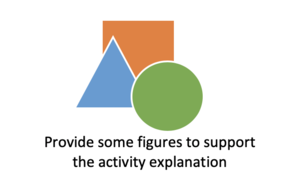Literature Review according to vom Brocke et al: Difference between revisions
| Line 42: | Line 42: | ||
===Examples=== | ===Examples=== | ||
===Further Readings=== | ===Further Readings=== | ||
Brocke, Jan vom; Simons, Alexander; Niehaves, Bjoern; Niehaves, Bjorn; Reimer, Kai; Plattfaut, Ralf; and Cleven, Anne, "RECONSTRUCTING THE GIANT: ON THE IMPORTANCE OF RIGOUR IN DOCUMENTING THE LITERATURE SEARCH PROCESS" (2009). ECIS 2009 Proceedings. 161. http://aisel.aisnet.org/ecis2009/161 | |||
==Research Agenda== | ==Research Agenda== | ||
===Description=== | ===Description=== | ||
Revision as of 10:01, 20 August 2020
Process description
The literature review process is essential in any kind of research and its importance has never been in doubt. A literature review seeks to uncover the sources relevant to a topic under study and, thus, makes a vital contribution to the relevance and rigor of research. With the rapidly increasing number of potentially relevant publications, its difficulty is increasing as well. The following process proposed by vom Brocke et al.[1]
supports researchers in crafting an effective literature review and guidance on how to deal with the increasingly dynamic context of information systems (IS) research.
Definition of Review Scope
Description
In order to clearly define the scope of a review, the established taxonomy for literature reviews presented by Cooper[2] is used. Cooper’s taxonomy is comprised of six constituent characteristics:
- Focus: Most literature reviews focus on research outcomes, research methods, theories, and/or applications.
- Goal: Common goals of literature reviews include summarising, criticizing, and/or integrating findings.
- Organization: For organizing a literature review, Cooper suggests a historical, conceptual, or methodological structure.
- Perspective: Reflects whether a certain position is espoused or not.
- Audience: Particularly determines the writing style of the author(s).
- Coverage: Four levels of coverage can be distinguished
- Exhaustive: including the entirety of literature on a topic or at least most of it.
- Exhaustive with selective citation: Considering all the relevant sources, but describing only a sample.
- Representative: Including only a sample that typifies larger groups of articles.
- Central: Reviewing the literature pivotal to a topic.
Examples
Further Readings
Brocke, Jan vom; Simons, Alexander; Niehaves, Bjoern; Niehaves, Bjorn; Reimer, Kai; Plattfaut, Ralf; and Cleven, Anne, "RECONSTRUCTING THE GIANT: ON THE IMPORTANCE OF RIGOUR IN DOCUMENTING THE LITERATURE SEARCH PROCESS" (2009). ECIS 2009 Proceedings. 161. http://aisel.aisnet.org/ecis2009/161
Cooper, H.M. (1988). Organizing knowledge syntheses: A taxonomy of literature reviews. Knowledge in Society, 1, 104-126.
Conceptionalisation of Topic
Description
Describe Activity 2.
Examples
Further Readings
<meta charset="utf-8">Brocke, Jan vom; Simons, Alexander; Niehaves, Bjoern; Niehaves, Bjorn; Reimer, Kai; Plattfaut, Ralf; and Cleven, Anne, "RECONSTRUCTING THE GIANT: ON THE IMPORTANCE OF RIGOUR IN DOCUMENTING THE LITERATURE SEARCH PROCESS" (2009). ECIS 2009 Proceedings. 161. http://aisel.aisnet.org/ecis2009/161
Literature Search
Description
Describe the Activity X.
Examples
Further Readings
<meta charset="utf-8">Brocke, Jan vom; Simons, Alexander; Niehaves, Bjoern; Niehaves, Bjorn; Reimer, Kai; Plattfaut, Ralf; and Cleven, Anne, "RECONSTRUCTING THE GIANT: ON THE IMPORTANCE OF RIGOUR IN DOCUMENTING THE LITERATURE SEARCH PROCESS" (2009). ECIS 2009 Proceedings. 161. http://aisel.aisnet.org/ecis2009/161
<meta charset="utf-8">
Literature Analysis and Synthesis
Description
Describe the Activity X.
Examples
Further Readings
Brocke, Jan vom; Simons, Alexander; Niehaves, Bjoern; Niehaves, Bjorn; Reimer, Kai; Plattfaut, Ralf; and Cleven, Anne, "RECONSTRUCTING THE GIANT: ON THE IMPORTANCE OF RIGOUR IN DOCUMENTING THE LITERATURE SEARCH PROCESS" (2009). ECIS 2009 Proceedings. 161. http://aisel.aisnet.org/ecis2009/161
Research Agenda
Description
Describe the Activity X.
Examples
Further Readings
<meta charset="utf-8">Brocke, Jan vom; Simons, Alexander; Niehaves, Bjoern; Niehaves, Bjorn; Reimer, Kai; Plattfaut, Ralf; and Cleven, Anne, "RECONSTRUCTING THE GIANT: ON THE IMPORTANCE OF RIGOUR IN DOCUMENTING THE LITERATURE SEARCH PROCESS" (2009). ECIS 2009 Proceedings. 161. http://aisel.aisnet.org/ecis2009/161
- ↑ Brocke, Jan vom; Simons, Alexander; Niehaves, Bjoern; Niehaves, Bjorn; Reimer, Kai; Plattfaut, Ralf; and Cleven, Anne, "RECONSTRUCTING THE GIANT: ON THE IMPORTANCE OF RIGOUR IN DOCUMENTING THE LITERATURE SEARCH PROCESS" (2009). ECIS 2009 Proceedings. 161. http://aisel.aisnet.org/ecis2009/161
- ↑ Cooper, H.M. (1988). Organizing knowledge syntheses: A taxonomy of literature reviews. Knowledge in Society, 1, 104-126.
